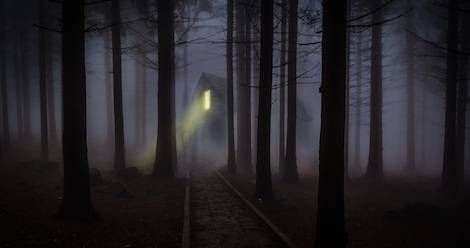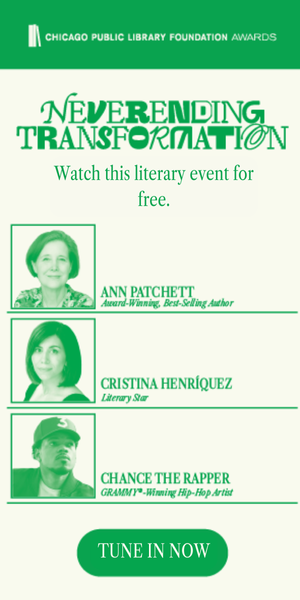This content contains affiliate links. When you buy through these links, we may earn an affiliate commission.
Deepali Agarwal has a Master’s in literary linguistics, which means that every person she’s ever known has, at some point, asked her to ‘edit a thing’ for them-- ‘just see if it reads okay?’ She doesn’t mind, because she believes that the world can be fixed one oxford comma at a time. Deepali lives in Delhi, the capital of India, where cows are sacred, but authors and poets exist and write brilliant things. She works as an editor with OUP India’s School ELT division, where she moves apostrophes, looks up pictures of cats, and talks about children’s books for eight hours. The rest of her day is spent reading, thinking about Parks and Recreation, and wondering if there exist jobs for English majors that pay more than peanuts.
Twitter: @DeepaliAgarwal_
View All posts by Deepali Agarwal
Earlier this week, Goodreads published a list of Top 100 Mysteries & Thrillers based on readers’ ratings, which I knew, going in, was going to be cause for some major eye-rolling. I came, I saw, I rolled my eyes aplenty, and decided to do a little statistical analysis (it might have gotten a little out of hand), hoping for some interesting results — and oh boy, look where we are. I did the math and the reading of Goodreads descriptions of plots so you don’t have to; presenting some frustrating takeaways from the world of murder and crime:
- Let’s start with the obvious basics: to no one’s surprise, this is the distribution of authors by gender and race, divided into four categories, to which I have nothing to say but ugh. There are literally TWO women of colour. Stephen King has as many books on the list as women of colour.
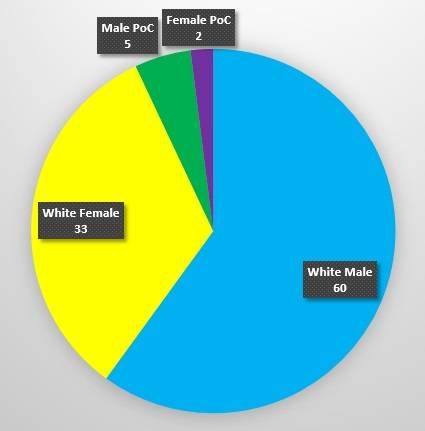
Here is the same chart divided into recent books and not-so-recent (anything before 2000). The percentage of white men has gone down in books published after 2000, so yay? However, I have stared at these for long, and it this is the way we’re moving, it’s going to be a slow, slow road to a large percentage diverse books being popular.
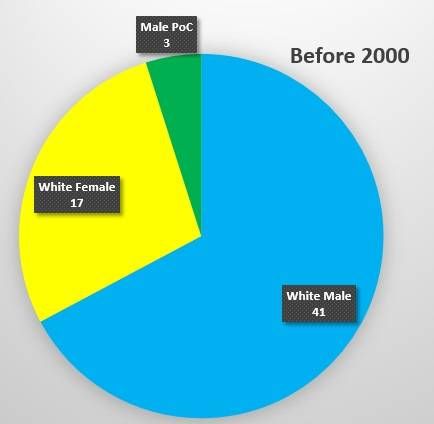
Unusual Suspects Newsletter
Sign up to Unusual Suspects to receive news and recommendations for mystery/thriller readers.
Thank you for signing up! Keep an eye on your inbox.
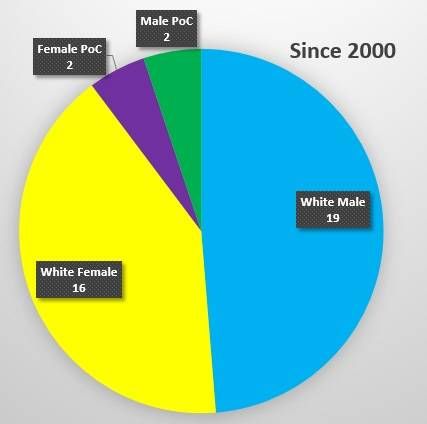 Give Agatha Christie a bloody (heh) medal. With four books on the list, I wish I could go hug this woman for standing tall among the Tom Clancys, Arthur Conan Doyles, and Michael Connellys (all with three books in the list).
A lot of these books have the classic “male cop investigating murdered woman” plot (I identified 10 from the descriptions, there might be more). When the women aren’t being “brutally murdered” and raped, they sometimes get to be the main characters. 35 out of these 100 books feature women as the main characters in some way, 9 of which have women as sidekicks and partners.
We need to start describing characters and blurbing books better. Seriously. In a 100% of books with male and female cops/detectives as co-protagonists, the woman occurs second in the description as such: “Man, with Woman by his side”, or “Man, teamed with Woman”. Karin Slaughter’s Triptych features this gem: “Male veteran cop and Female beautiful vice cop.” In Caleb Carr’s The Alienist, two men set out on a mission but when “they are joined by Sara Howard, a brave and determined woman who works as a secretary in the police department,” their team becomes “unlikely.” Sue Crafton’s M is for Malice, written by a woman and featuring women doesn’t even have GR description.
Give Agatha Christie a bloody (heh) medal. With four books on the list, I wish I could go hug this woman for standing tall among the Tom Clancys, Arthur Conan Doyles, and Michael Connellys (all with three books in the list).
A lot of these books have the classic “male cop investigating murdered woman” plot (I identified 10 from the descriptions, there might be more). When the women aren’t being “brutally murdered” and raped, they sometimes get to be the main characters. 35 out of these 100 books feature women as the main characters in some way, 9 of which have women as sidekicks and partners.
We need to start describing characters and blurbing books better. Seriously. In a 100% of books with male and female cops/detectives as co-protagonists, the woman occurs second in the description as such: “Man, with Woman by his side”, or “Man, teamed with Woman”. Karin Slaughter’s Triptych features this gem: “Male veteran cop and Female beautiful vice cop.” In Caleb Carr’s The Alienist, two men set out on a mission but when “they are joined by Sara Howard, a brave and determined woman who works as a secretary in the police department,” their team becomes “unlikely.” Sue Crafton’s M is for Malice, written by a woman and featuring women doesn’t even have GR description.
Let’s talk more about these female protagonists, which either accidentally stumble upon the murder/crime or are unlikely suspects in the plot; they are rarely formally established and celebrated cops or detectives. Sample this description I Let You Go, with a female protagonist: “Desperate to escape, Jenna moves to a remote cottage on the Welsh coast, but she is haunted by her fears, her grief and her memories of a cruel November night that changed her life forever. Slowly, Jenna begins to glimpse the potential for happiness in her future. But her past is about to catch up with her, and the consequences will be devastating.” It is tough to read this, keeping in mind that this is opposed to their male counterparts, who get to be “brilliant geniuses” and “brave” and “veteran”, while women remain “lonely”, “desperate”, or at most “the first in their fields”.
In other miscellaneous (read depressing) stats, only six books out of these 100 are translations, and 62 are by American authors (the others are from the UK, with a smattering from Australia, Japan, Italy, Sweden and Spain).
Unfortunately, I realized too late into my research that too many of our celebrated male protagonists were named Jack. My unofficial estimate is 11, but anyone is welcome to count and come back to me with a verified figure. There are basically more Jacks in there than PoC authors. I call for a moratorium on Jacks in all of literature (fingers crossed Jack Sparrow disappears too).
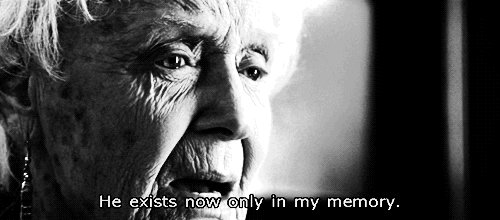
Let’s read some diverse mysteries and thrillers, now, shall we? Go for books from around the world, some kickass female sleuths, and subscribe to our amazing Unusual Suspects newsletter.
